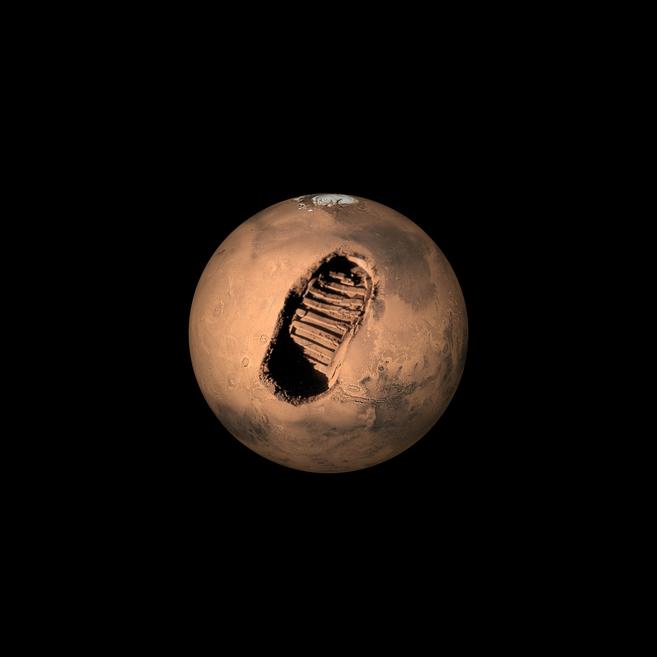Are we an interplanetary species as Asimov or Sagan pointed out?For Elon Musk, the answer is evident: yes.Hence your company Spacex has proposed to take man to Mars in 2024.
NASA, meanwhile, also aims to reach Mars in Missions with astronauts, although its dates are long term: at some point in the 2030s.
China, meanwhile, is confident in being able to get ahead of all and disembark on the red planet in 2023.
Now, not everything is so idyllic in the space race that has been opened in the last decade, largely driven by the emergence of private companies such as Spacex or Blue Origin, by Jeff Bezos.
The time of Mars's colonization missions
On the one hand, we must consider the time consumed by the trip between the 2 planets.Especially when the distance between them varies depending on the rotation cycle around the sun of each.
If the earth is at its point farther from the sun and Mars at its closest point, and provided that the 2 bodies are perfectly aligned, the manned mission should exceed a distance of 54.6 million kilometers.
However, this is a hypothesis: it has never happened.For now.The greatest approach between Earth and Mars was lived in 2003: they were separated by a space of 56 million kilometers.
It is estimated that the closest point of each cycle occurs every 26 months, at which time it is used to launch the missions.

Fox
The Perseverance mission, for example, consumed 2020 days of space travel, just over 6 months.It was launched on July 30, 2020.
Another aspect that scientists are studying is how long a human mission can be on Mars.
And there is already a established limit: 4 years.This would be the time of permanence on the Martian surface for a human in his current state (the genetic modification is contemplated to achieve permanent human colonies adapted to the planet's conditions).
Why?According to a study published in the Space Weather magazine, the radiation to which the body of astronauts who step on their surface will be a serious problem will be subjected.
According to the data collected by the various exploration missions, there will be 2 main types of radiation that will involve a danger to man: solar energy particles (SEP) and galactic cosmic rays (GCR).
The intensity and evolution of both with respect to how they act on the surface of Mars depends on solar activity in the various cycles.
Here enters the equation what is called the solar maximum: that cycle in which the most aggressive radiation of the king star decreases and humans can protect themselves from SEP particles.
Mars colonization challenges
In addition to time, the colonization posed by Elon Musk, as he himself has recognized several times, faces several crossroads.
Self -sufficiency is one of them.The cost and delay of sending supplies to a region to colonize makes this option unfeasible.
The objective of all those who try to achieve the mile.
Spacex
Although it is not spectacular, and the cinema goes on it as something funny, today part of the water that nourishes, for example, to the International Space Station was born from the recycling of urine, as National Geographic explains.
For the subsistence of societies in the colonization and terraft of Mars, cities, genetic diversity and protection are needed.
NASA has not yet solved the problem of the space costumes with which it will send its astronauts to the red planet nor have the material shipments needed to establish a first colony.
A map of the entire Martian surface has not even been made to find convertible zones and regions in habitables.Probably underground.
To all this is added the damage to the organism that implies spending a lot of time without gravity in space.The Kelly twin experiment, held in 2014 by NASA, allowed to extract these conclusions:
However, these data still correspond to research on space and not on Mars.
Another challenges to over. El lanzamiento de la primera cápsula con civiles no astronautas abre las puertas a conseguirlo, según el propio CEO de Spacex, convencido de los viajes a Marte no serán solo para ricos.
Without mining or Portezuelo, a company that produces wine is born in Malargüe
Goodbye to Carlos Marín: this is the heritage and fortune left by the singer of Il Divo
Study considers that gender equality is not a priority for 70% of global companies
Ceviche to Recoleta and croissants for officials: the bet of the workers of Villa 31 to sell outside the neighborhood